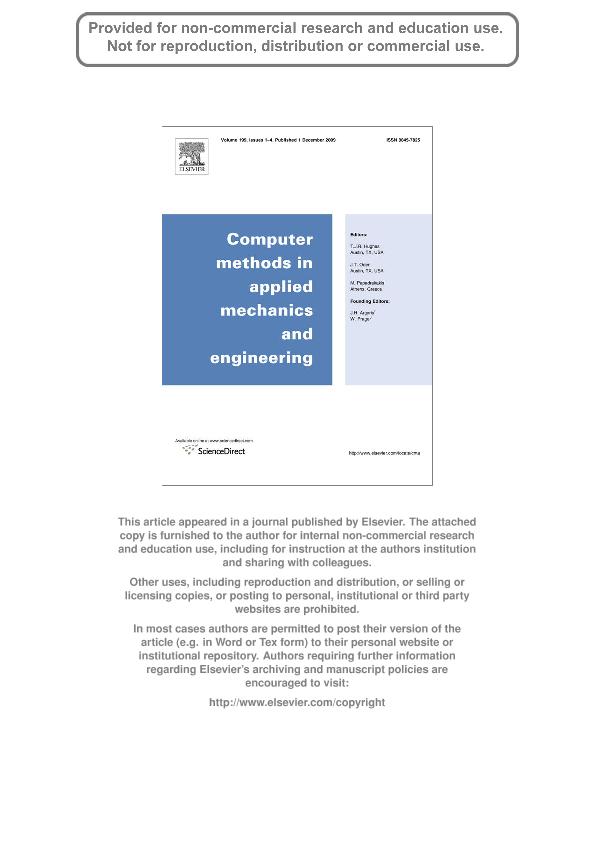Artículo
Gradient and fracture energy-based plasticity theory for quasi-brittle materials like concrete
Fecha de publicación:
12/2009
Editorial:
Elsevier Science Sa
Revista:
Computer Methods in Applied Mechanics and Engineering
ISSN:
0045-7825
Idioma:
Inglés
Tipo de recurso:
Artículo publicado
Resumen
In this work a thermodynamically consistent non-local gradient and fracture energy-based plasticity theory is proposed to simulate the failure behavior of concrete. The model incorporates two characteristic lengths, one due to the microcrack opening process and the other due to the non-local degradation process of the continuum in between cracks. The failure behavior of quasi-brittle materials like concrete is controlled by a decohesion mechanism expressed in terms of a combined fracture-energy and non-local gradient-based softening formulation. The two resulting characteristic lengths are functions of the stress state to describe the increasing non-locality of the degradation process as well as the reducing distance between microcracks with the increment of the confining pressure. In this way the transition from brittle to ductile post-peak response of quasi-brittle materials like concrete is realistically predicted. The thermodynamically consistent formulation covers both the hardening and softening regimes of the proposed constitutive model. The compressive meridian of the model maximum strength criterion agrees with that of Leon while constant and maximum value is adopted for the eccentricity leading to the circular forms of the failure surface deviatoric views similarly to the Drucker-Prager criterion. A volumetric non-associated flow rule is taken into account to appropriately describe the inelastic behavior of concrete in the low confinement regime. The predictive capabilities of the proposed constitutive formulation are tested against experimental results on concrete specimens in tensile and compressive regimes.
Archivos asociados
Licencia
Identificadores
Colecciones
Articulos(CCT - NOA SUR)
Articulos de CTRO.CIENTIFICO TECNOL.CONICET - NOA SUR
Articulos de CTRO.CIENTIFICO TECNOL.CONICET - NOA SUR
Citación
Vrech, Sonia Mariel; Etse, Jose Guillermo; Gradient and fracture energy-based plasticity theory for quasi-brittle materials like concrete; Elsevier Science Sa; Computer Methods in Applied Mechanics and Engineering; 199; 1-4; 12-2009; 136-147
Compartir
Altmétricas




